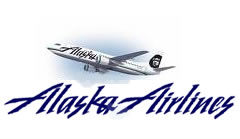What are issues facing Alaskans today related to transportation and communication?
 Funding is critical across the board. Whether it is from the government or down to the local level, maintenance, general upkeep, and projected development requires lots of money. It's hard to get the funding when the projected needs of transportation (highways, avaiation, AMHS) exceeds their combined revenues by $700 million dollars (Let's Get Moving 2030). In attempt to make a profit or maintain the service, fare prices and other costs continue to increase.
Funding is critical across the board. Whether it is from the government or down to the local level, maintenance, general upkeep, and projected development requires lots of money. It's hard to get the funding when the projected needs of transportation (highways, avaiation, AMHS) exceeds their combined revenues by $700 million dollars (Let's Get Moving 2030). In attempt to make a profit or maintain the service, fare prices and other costs continue to increase. |
| U.S. Coast Guard Cutter Healy and Russian tanker Renda on their way to Nome. Provided by Sara Francis/U.S. Coast Guard via Getty Images CBS News |
On a larger note, climate changes can be linked to the pollution and emissions globally. Alaska's DOT article, Let's Get Moving 2030, further breaks down the percentage released by means of transportation. Aviation leads in emissions at 67%, land travel (not including rail) 19%, and marine 13%.
I highly recommend the Alaska Department of Transportation Let's Get Moving 2030 article. It's very informative and puts things into perspective.
Examine Question:
Identify the three major railroads in Alaska history- where? when? why? ownership? current status?
1)White Pass and Yukon Railway-
Where: Skagway to Whitehorse- approximately 110 miles long, over 90% of the rail is in Canada
 |
| Photo: John Call Benedict, engineer, stops for a photo with Steam Engine No. 5 in 1900 WY&YR facts |
Why: To transport miners and stampeders to the Klondike gold rush and to link mines to main water sources
Ownership: Close Brothers of London sold the route to Canadian investors in 1951. During WWII, U.S government used rail for transporting military supplies.
Current Status: In 1982, mines and WP&YR operations closed, but the railroad reopened in 1988. Today, it hosts many tourist excursions and hauls freight.
| CR&NR along Abercrombie Canyon with steam shovel John Urban Collection, 1896-1913, Vilda AMRC b64-1-150 |
Where: Port in Cordova to Kennecott copper mines, approximately 196 miles long, nearly 50% on elevated structures (bridges, trestles)
When: Completed in 1911
Why: To complete a route from interior mines to open bodies of water (through Cordova). Also, shipping of mostly copper ore and some gold and silver
Ownership: Alaska Syndicate bought railroad from Michael J. Heney in 1906.
Current Status: Mine and railroad abandoned in 1938. Land and bridges donated to U.S. government for road development.
3)Alaska Railroad-
Where: Resurrection Bay in Seward to Fairbanks, freight can continue to the Ellison Air Force Base, overall 520 miles of track
When: Completed in 1923
 |
| Our trip from Anchorage to Seward on the 4th of July via the Alaska Railroad. |
Ownership: Alaska Central Railroad Company in 1903 was bought out by a group of Canadians in 1904 until they went bankrupt. Alaska Northern Railway Company, originally Alaska Central, purchases it in 1909-1910.
Current Status: Transportation of visitors/tourists, 10 various tours, 6 schedules varying through the year, hauling of freight, up to 8 million tons according to Alaska Railroad.
Extend Question:
How adequate are the systems in your region of the state?
I think the systems in the Southeast are quite adequate. From a water perspective, the Alaska Marine Highway in this region stretches from Bellingham,Wa to Skagway, Ak. From there you can get connections to any other regions in Alaska. The one issue I see, but would be hard to alter, is the timing of arrivals and departures and the duration spent in a port. I know I've ran into problems with that before. The AMHS constantly looks for new ideas and technologies that will benefit the marine highway and its travelers. Furthermore with water travel, cruise lines bring the annual tourists that help support the port towns along the coast. The SE economy would diminish if this system was inadequate or non-existent.
Air travel in the SE and anywhere in Alaska is a prominent means of travel. Either by helicopter or by plane, this method is the quickest way to transport cargo and people in and out of the area. One downfall is how expensive it is to fly with in the state and trying to get out, but there are many other in state flight companies that can be of aid if one doesn't work out.
Evaluation:
Blog Comments:
Shannon's blog is visually appealing and informative. I liked how she incorporated personal photos into her blog.
Robin had a nice presentation for her re-cap of Module V. It was easy to read and easy to access previous and new information through her hyperlinks.
Great opening photo in Joan's blog. Being new to Alaska I guess I never truly understood the dynamics of the pipeline and how it cuts through Alaska. I further liked how she tied in current events to our topics. It's very fitting since the legislature is in session.



No comments:
Post a Comment